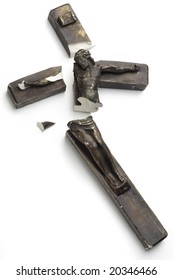Hinduism is a broad term that encompasses the beliefs of many people. What exactly Hinduism means depends on the person you ask. In my studies of Hinduism, one memory sticks out, going to the Karya Siddhi Hanuman Temple in Frisco Texas. While I was there talking to the representative of the temple, we got on the topic of “how many gods are there in Hinduism.” He replied with something like “268543843 gods. But, the number isn’t important.” In his belief the gods are innumerable and if you could count them the amount would constantly changing. Another belief is that there is a single god who can take infinite forms. Gods fall in and out of popularity and sometimes into obscurity. Later, he talked about how it doesn’t matter who or what you worship just that you don’t hurt anyone in the process.
Karya Siddhi Hanuman at Frisco, TX
Any god can be a Hindu god in the temple representative’s opinion. This belief touches on something similar to the metaphysics of “American Gods.” If you believe in something and worship it, purposefully or not, it is real. The new gods like Technology and Television come to mind. We worship them without realizing and we provide valuable sacrifices like money or time. In this light, you could argue that these are Hindu gods. We worship them with our attention and we mostly don’t hurt other while doing so.

Many Hindu writings, like the Bhagavad-Gita for example, show that the gods can take many forms. In the Gita its Vishnu as Krishna but in “American gods” all of these gods have this ability. They use these forms to get close to humans and to impact their lives. Mr. Wednesday uses this to get close to shadow and to blend into the human world around him. Similar to how Krishna takes human form to influences and help those around him.
Vishnu as Krishna reveals his true self to Arjuna
Eventually Kali herself, a popular and still worshipped Hindu god, comes into the book. (124) The description of her is, “something huge, a naked woman with skin as black as a new leather jacket., and lips and tongue the bright red of arterial blood. Around her neck were skulls, and her many hands held knives, and swords, and severed heads.” This description is strikingly accurate to illustrations of Kari all around her places of worship. Her fierceness and wrath are also characteristically accurate. In response to a question asking her what she would do if she was attacked, she says, “if they try such a thing, they will find me hard to catch, and harder still to kill.”

Modern popular Smashan Kali painting by Raja Ravi Varma
The concept of Dharma is also at work here. This is also another concept whose definition is a little hard to nail down. The temple representative thought of dharma as the cosmic order but Sikhs and other Hindus may give you a different answer. The old gods are trying to maintain their rule against these newcomer gods. This could be thought of as them maintaining their cosmic order. The book keeps alluding to a coming storm. Storms being inherently chaotic makes the Dharma connection fitting.





